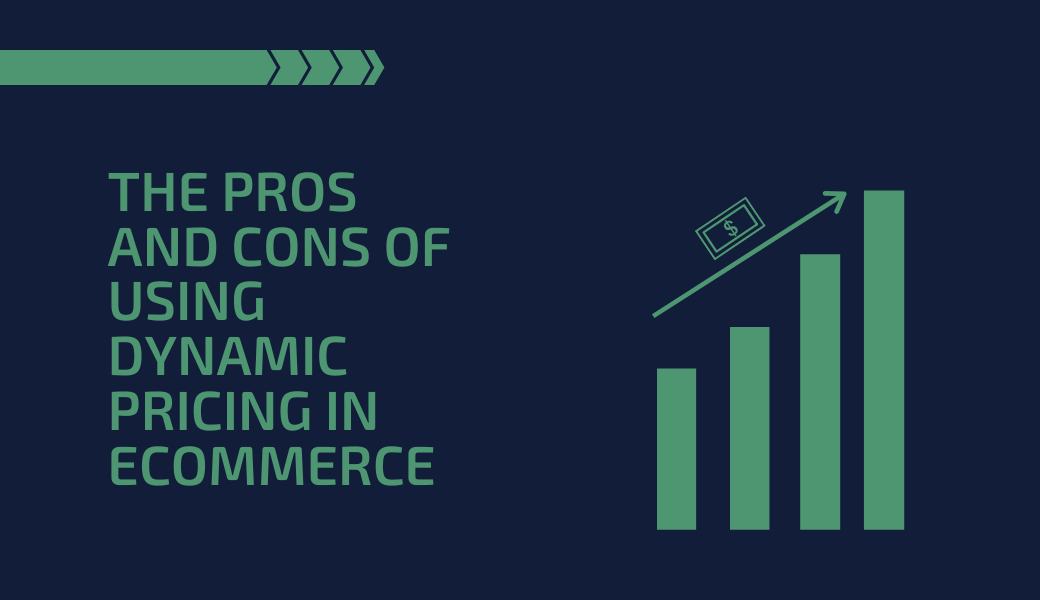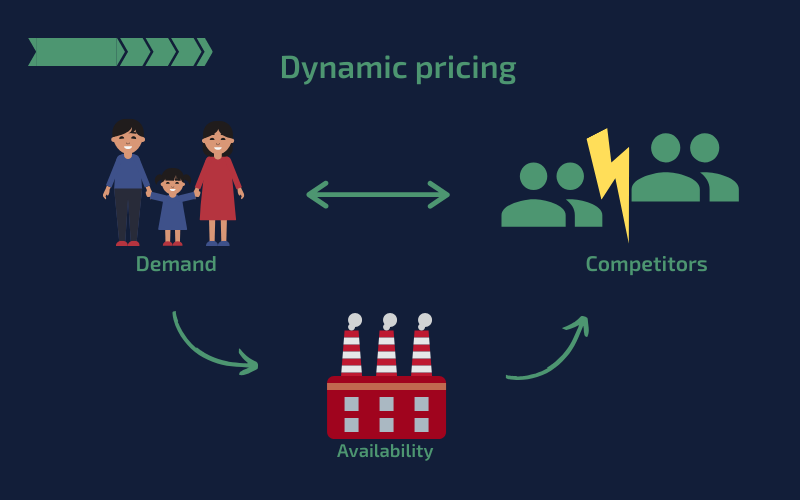
One of the hottest topics in the eCommerce world for a while now has been dynamic pricing. Even though this concept isn't new and it's been used since the '70s by the airline industry, nowadays it has found its place across the whole market. One of the main reasons for this is the rise of digitalization, which gave many companies the opportunity to become more responsive to their pricing strategies.
Despite all the advancements that technology has provided, dynamic pricing still requires guidelines and clear strategies directed by humans. Therefore, there isn't a one-size fit that’s applicable to all business environments. Something that can be a great strategy for online retailers in the travel or airline industry might end up in a complete disaster for others in the music or electronic industry. Nowadays, dynamic pricing isn't only related to the online world – even brick-and-mortar stores have given in and understood the need for being more flexible with pricing strategies.
Under Digital Influence
Why is it that dynamic pricing is under so much influence from digitalization? The answer consists of only one word – data. Digitalization has enabled gathering and storing a huge amount of data, which comes in handy when companies are working on their pricing strategies. Therefore, the adjustment of prices goes faster and more smoothly because companies can count on various types of data. This way, dynamic pricing has found its path by helping businesses with providing a higher level of personalization. Data provides a better insight into the customer's wants and needs while allowing companies to make the right pricing differentiation. Not every price is suitable for every customer, nor are price changes are always welcomed. To be sure that they are making the right decision, companies can rely on gathered data and become more aware of their customer's pricing sensitivity.
The benefits of dynamic pricing are countless – companies can have a better balance between customer demand and supply and, therefore, are able to prevent any waste in money, products, and resources. But, as we mentioned above, dynamic pricing can't be done randomly and without thinking it through. Instead of making you more flexible to market trends, it can very easily endanger customers' trust. Dynamic pricing is a feature that is now offered by many price monitoring companies to help eCommerce professionals in reaching their pricing goals. One of the companies that you can consider for providing this kind of service is Price2Spy. But, before you do so, it is important to consider some of the key points of dynamic pricing (repricing).
Even though every case is individual, let's discuss some guidelines so that you become more certain when deciding whether dynamic pricing is a good idea for your business.
1. Dynamic Pricing in Capacity-Constrained Situations
This well-known example often happens in many industries. Let's take the airline industry as the most obvious example. Airline companies have a certain amount of planes and seats that they can offer to passengers. When investigating their clients, companies became aware of the fact that the clients can be divided into different pricing segments. There are passengers who like to plan their trips and they book the tickets a few months in advance. By doing this, they secure their place on the flight, but they also get it at a lower price. These passengers will be defined as price-sensitive ones, unlike the ones who are willing to pay a higher cost (for example, businessmen who have some last-minute planned trip). At the same time, when some destinations and dates are extremely popular, it is expected that there will be more interest in booking those flights as the date comes closer. So, setting a lower price that will increase as the date gets closer is a very logical and profitable strategy.

2. Use of Dynamic Pricing in Sensitive Cases
For sure, algorithms on which the dynamic pricing is based on will show you when there is a higher demand for your products. But, as we said, technology must always be under human control. Your team needs to consider this decision very well because, in the long run, it isn’t always just about the money; it’s also about the company's reputation.
Here, Sony Music and Nike can be looked at as bad and good examples respectively.
When Whitney Houston passed away, Sony Music correctly assumed that there would be an increased demand for her albums. Therefore, they've decided to increase the price, but people became furious, accusing them of trying to profit from her untimely passing.
On the other hand, when a helicopter accident resulted in the passing of Kobe Bryant, Nike decided to pull out from releasing a sneaker collection with his name. As Bryant was a Nike brand ambassador, Nike stated that they didn’t want to benefit from such a tragedy.
3. Seasonal Demand and Dynamic Pricing
Even if you have very little knowledge about pricing strategy in general, you are most likely familiar with the concept of seasonal demand. To put it simply, this means that some products or services will be more popular during certain times of the year. For example, when it comes to the Christmas season, you know for sure that people are willing to spend more money because they are buying presents for their loved ones. That's why everyone offers some discounts during that time of the year – companies know that the price decrease will be compensated with the larger amount of sold products. But, this way, they are also trying to convince the customers that they are better than the competition.
4. Comparability Doesn't Go Well with Dynamic Pricing
It's completely understandable that you want to benefit from using dynamic pricing, but you should be careful with not taking it too far. Everything comes back to the position that you are in. If you are a popular airline company, you can benefit from dynamic pricing because there is a supply constraint. The number of planes and seats is limited, and you can't just make another plane so easily, can you? But, if you are a retailer who is selling something online, there is not as much room for you to play around with pricing because your product can be found elsewhere, meaning you'll just lose a potential customer.

5. Improved Flexibility and Understanding Trends
Dynamic pricing allows companies to follow the trends on the market and be flexible when it comes to defining more specific goals. Let's take brick-and-mortar stores as an example. Since most of them now have digital price tags, they can follow up on what is going on with the stocks and the product expiration date. So, they don't only benefit from lowering the price and selling more, but they’re also minimizing the waste of products.
As you can see, despite being mostly related to pricing elements, dynamic pricing is a much wider concept that requires a whole set of business strategies. Everything comes back to defining what is best for your business. It may be that brick-and-mortar stores can’t implement this kind of pricing strategy in the same way as other eCommerce stores can, but there are some elements that they can for sure make use of.
6. Not Every Business Is Suitable for Dynamic Pricing
You don't need to always go with the flow. Of course, it's important to keep an eye on your competitors, but that doesn't mean that you need to blindly follow their actions. Sometimes, not doing something can become your unique comparative advantage. You can decide that you don't want to do seasonal pricing and instead want to have the same prices during the whole year. That way, you can present quality as the main characteristic that your company focuses on, regardless of the season. Another important thing is to always keep in mind the human factor. It's vital to always check price changes just to make sure that they are reasonable and in line with your whole pricing strategy.
The Importance of a Step-By-Step Approach
These do’s and don'ts examples show how important it is to know your customers and the market that you are a part of. Also, every business represents an individual case, so you must take into account factors such as price elasticity and stock changes. Therefore, dynamic pricing is a step-by-step approach that needs to be in alignment with the whole company's strategy, which can only be done right by a human. As much as tech evolution has a significant role in eCommerce development, the human factor will always remain an irreplaceable part of the puzzle. With that in mind, dynamic pricing is a necessary strategy that will make your business stand out among the competition. If done properly, it can provide businesses with a wide range of possibilities, but if not, as we've said, a lot of problems can appear.
What are your thoughts about dynamic pricing? Where do you think that companies usually make mistakes? Share your opinions with us in the comments below.





Leave a reply or comment below